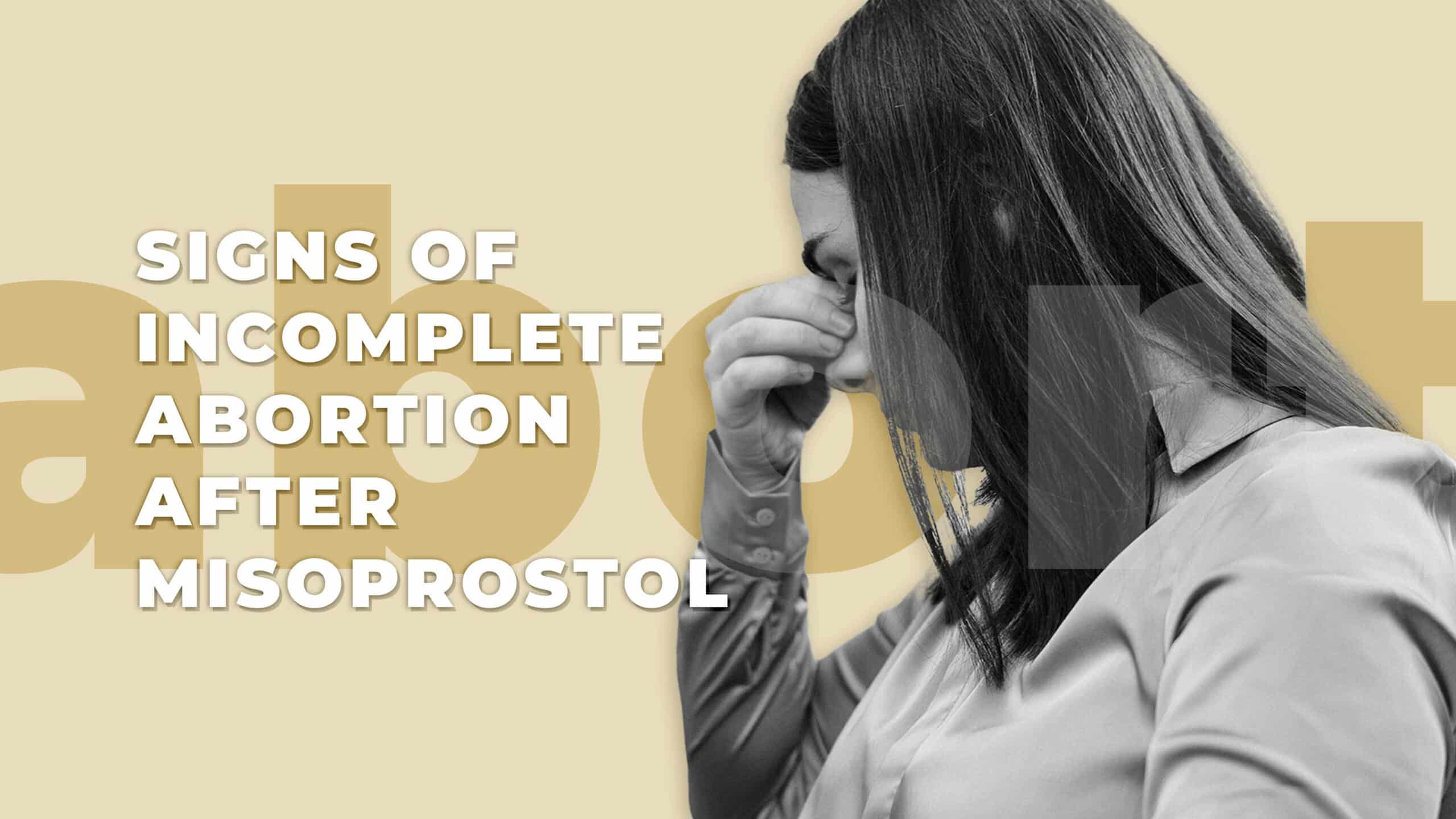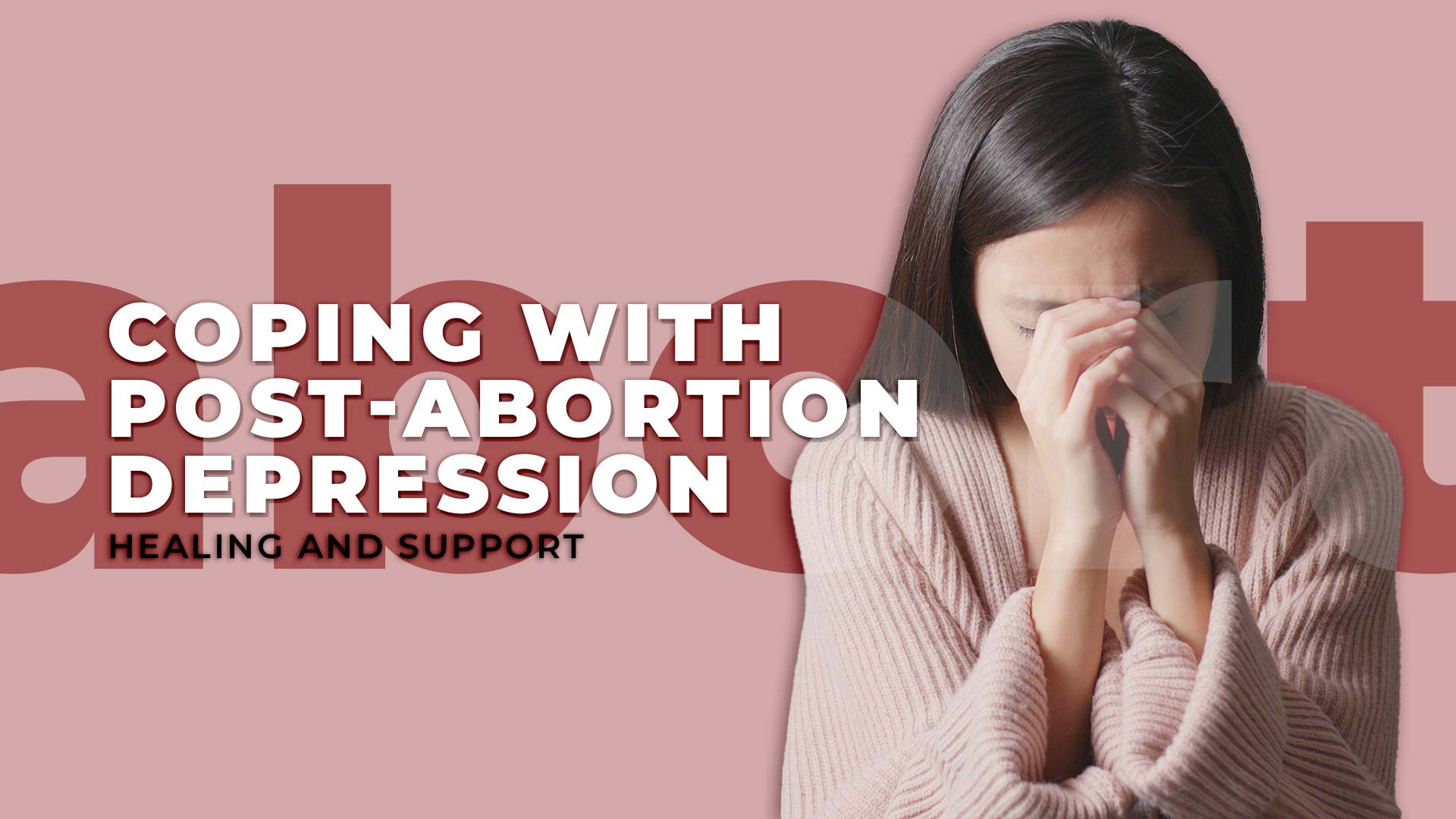If you are considering an abortion or suspect that you may be experiencing symptoms of incomplete abortion, it is essential to understand the facts. Here’s what you should know.
In this article, we will explore the causes, symptoms, and treatment options for incomplete abortion, as well as ways to prevent it.
What is an incomplete abortion?

An incomplete abortion is one in which some of the pregnancy tissue is left in the uterus after the abortion. This can lead to ongoing bleeding, infection, and other complications. In severe cases, an incomplete abortion can even be fatal. This can occur with any type of abortion, but it may be more of a concern for women who order the abortion pill online without the guidance of a trained healthcare provider.
Signs of an incomplete abortion
Incomplete abortion occurs more frequently with medication abortion due to less interaction with medical professionals and potential user error. Nonetheless, both types of procedures carry a risk of incomplete abortion. If you experience any of the following symptoms, seek assistance from a medical professional. Signs of an incomplete abortion may include:
- ongoing moderate to heavy vaginal bleeding
- abdominal pain or cramping
- the presence of tissue or clots in the vagina
- pain in the back, buttocks, genitalia, and perineum
- fever
If you have taken misoprostol and are experiencing any of these symptoms, it is important to seek medical attention right away. A healthcare provider can perform a physical exam and other tests to determine whether an incomplete abortion has occurred, and can provide the necessary treatment to address the situation.
How does an abortion remain incomplete after consuming misoprostol?
There are several reasons why an abortion may remain incomplete after taking misoprostol. One possible reason is that the correct dosage of the medication was not taken, or that it was not taken according to the recommended instructions. Another reason may be that the woman’s uterus did not respond adequately to the medication, or that there were complications with the pregnancy that made it difficult for the medication to work.
If you have taken misoprostol and are concerned that you may have an incomplete abortion, it is important to seek medical attention right away. A healthcare provider can determine whether an incomplete abortion has occurred and can provide the necessary treatment to address the situation. This may include additional medication or a surgical procedure to remove any remaining pregnancy tissue from the uterus.
What happens if an incomplete abortion takes place?

If any material remains in your womb, it may create complications such as an infection if it is not removed. The doctor may advise an ultrasound scan to confirm the diagnosis. If you experienced an incomplete abortion after taking the abortion pill, you may be able to take another dose of misoprostol to compress your womb more. The doctor may also suggest a surgery to empty the womb if another dose of misoprostrol isn’t right for you. Manual vacuum aspiration of a dilatation and curettage technique may be possible. You shouldn’t need to spend the night in the hospital for either procedure because it can usually be done without a general anaesthetic.
The same techniques are used to treat women who have experienced an incomplete miscarriage or who have tissue remaining in their womb after giving birth. The procedure ought to guarantee that no tissue is left in your womb. There should be a rapid improvement in your symptoms and no longer be any chance of more severe problems. Nevertheless, you should continue to be alert for any indications of an infection or other issues and get in touch with your doctor if you have any concerns.
What is the probability of incomplete abortion occurrence?
Although there are few studies on incomplete abortion frequency, a Finnish study on nearly 5,000 abortions found it to be the most common complication related to medical abortions performed before 12 weeks. The complication rate related to abortions is generally about 2%. If a woman encounters incomplete abortion, it may necessitate surgical intervention.
The bottom line

Misoprostol is a medication that is commonly used to induce abortion. It is typically taken in combination with another medication, such as mifepristone, and is effective in terminating a pregnancy in most cases. However, there is a risk of incomplete abortion after taking misoprostol, which can be a potentially dangerous and life-threatening situation. Moreover, misoprostol is a powerful medication, and can have serious side effects. If you have taken misoprostol and are experiencing severe abdominal pain or excessive bleeding, you should seek medical attention immediately. In these cases, emergency care may be necessary to prevent serious complications or death. By seeking medical attention right away, you can ensure that you receive the necessary treatment to address the situation and avoid potentially serious complications.
References
- Redinger A, Nguyen H. Incomplete Abortions. [Updated 2022 Jun 27]. In: StatPearls [Internet]. Treasure Island (FL): StatPearls Publishing; 2022 Jan-. https://www.ncbi.nlm.nih.gov/books/NBK559071/
- Henriques A, Lourenço AV, Ribeirinho A, Ferreira H, Graça LM. Maternal death related to misoprostol overdose. Obstet Gynecol. 2007 Feb;109(2 Pt2):489-90. doi: 10.1097/01.AOG.0000253248.64065.94. PMID: 17267868. https://pubmed.ncbi.nlm.nih.gov/17267868/
- Ngo TD, Park MH, Shakur H, Free C. Comparative effectiveness, safety and acceptability of medical abortion at home and in a clinic: a systematic review. Bull World Health Organ. 2011 May 1;89(5):360-70. doi: 10.2471/BLT.10.084046. Epub 2011 Mar 4. PMID: 21556304; PMCID: PMC3089386. https://pubmed.ncbi.nlm.nih.gov/21556304/
- Carlsson, I., Breding, K. & Larsson, PG. Complications related to induced abortion: a combined retrospective and longitudinal follow-up study. BMC Women’s Health 18, 158 (2018). https://doi.org/10.1186/s12905-018-0645-6
- Sajadi-Ernazarova KR, Martinez CL. Abortion Complications. [Updated 2022 May 23]. In: StatPearls [Internet]. Treasure Island (FL): StatPearls Publishing; 2022 Jan-. Available from: https://www.ncbi.nlm.nih.gov/books/NBK430793/





